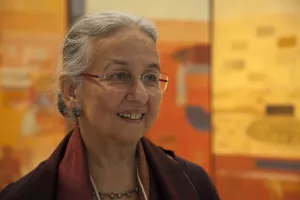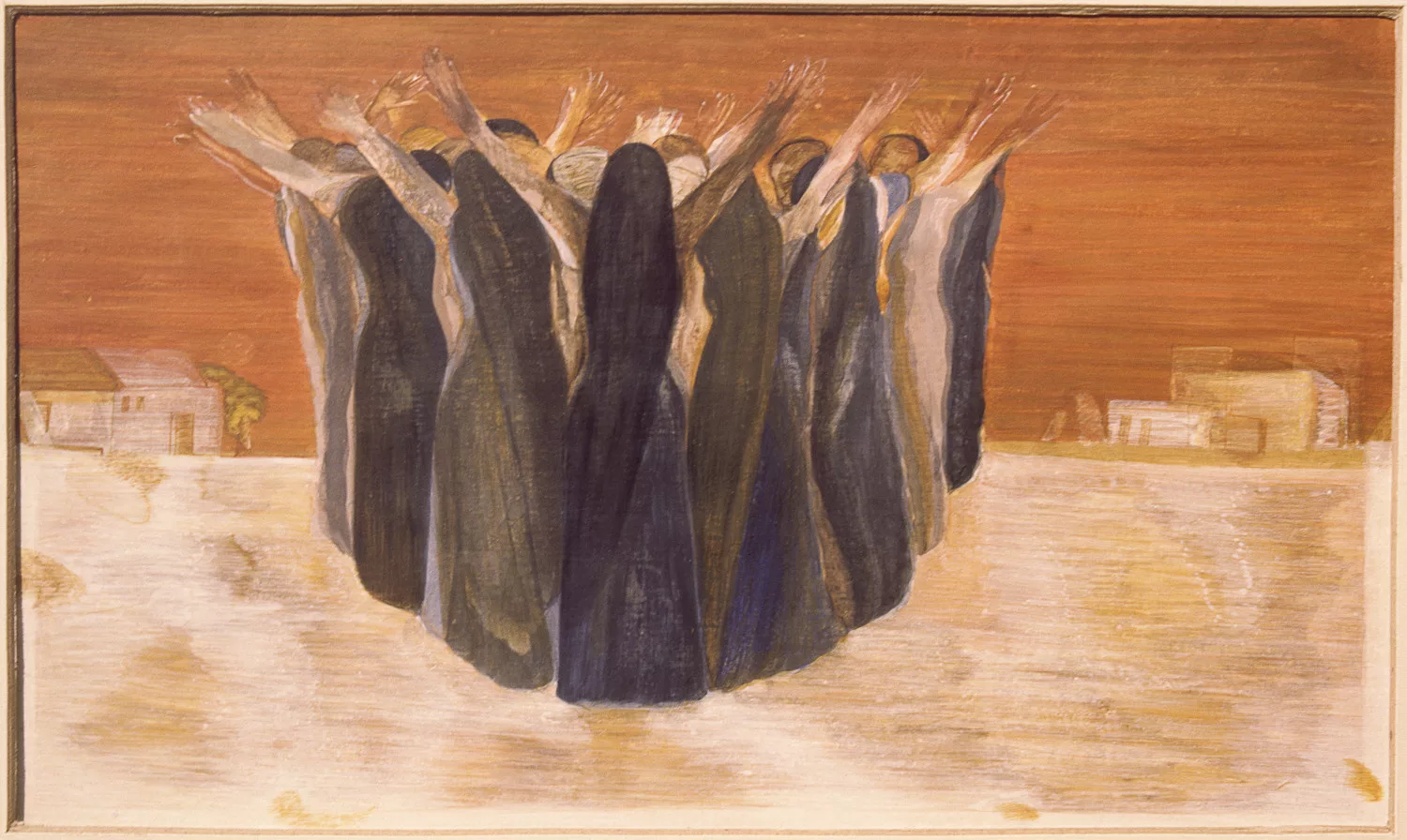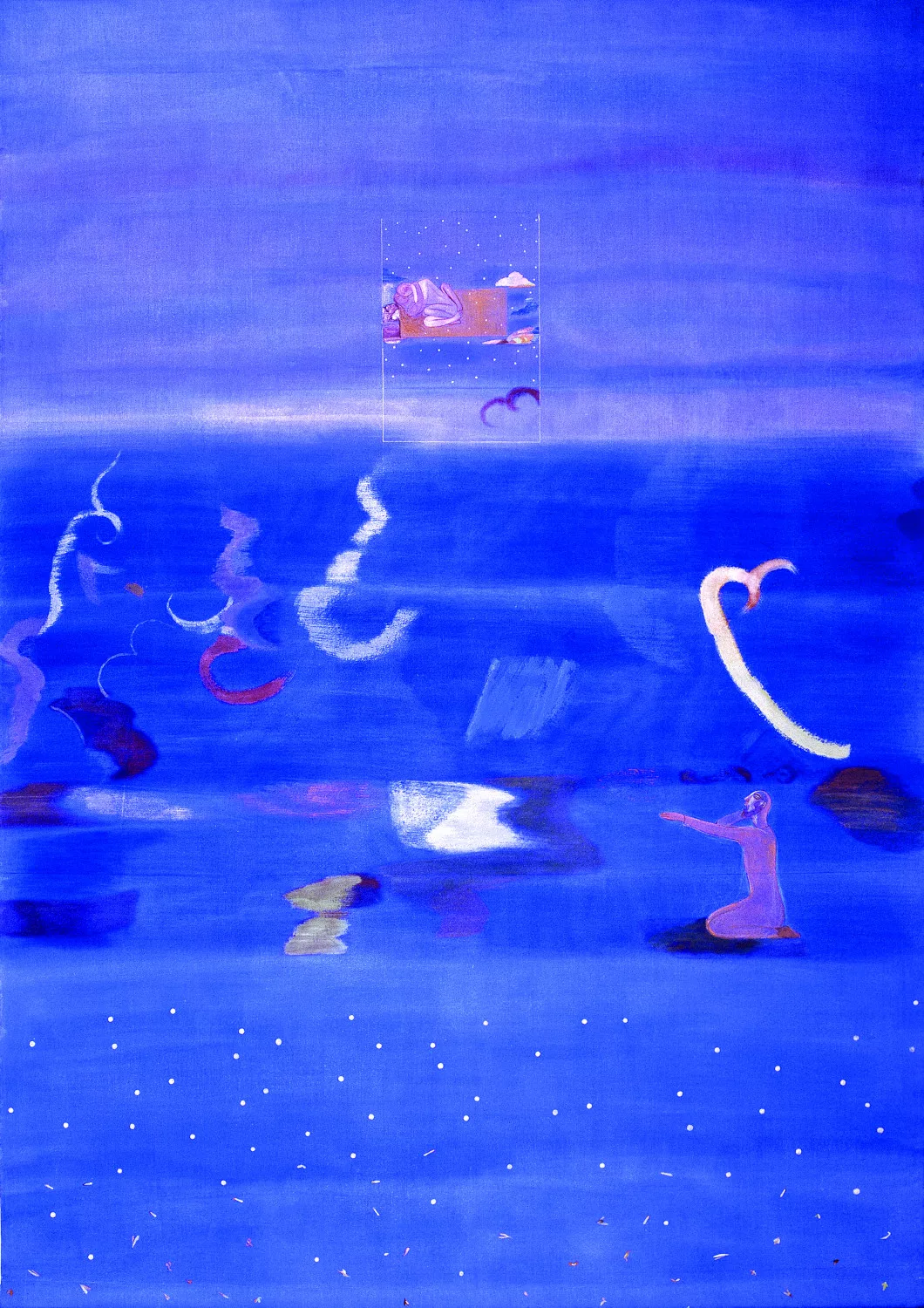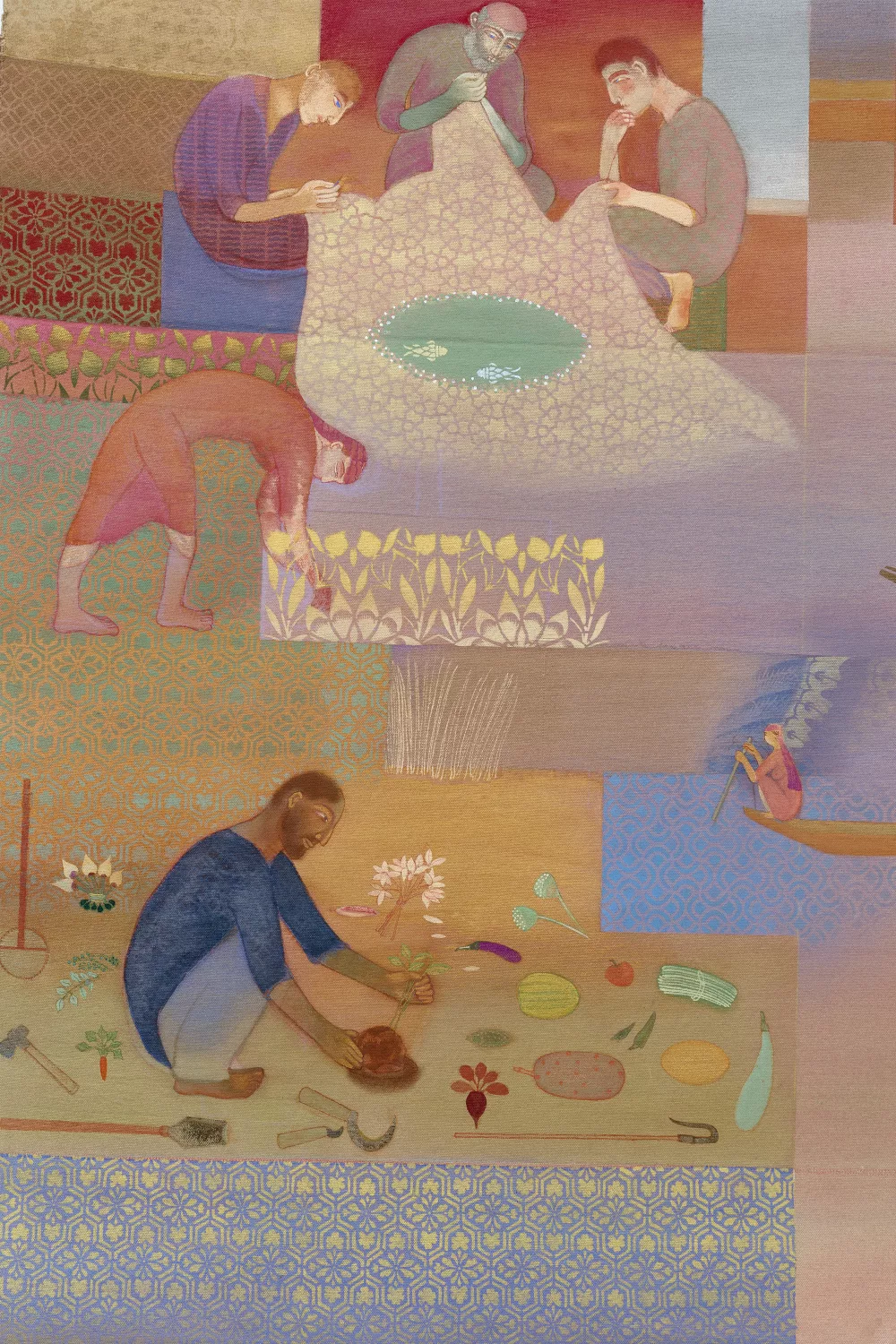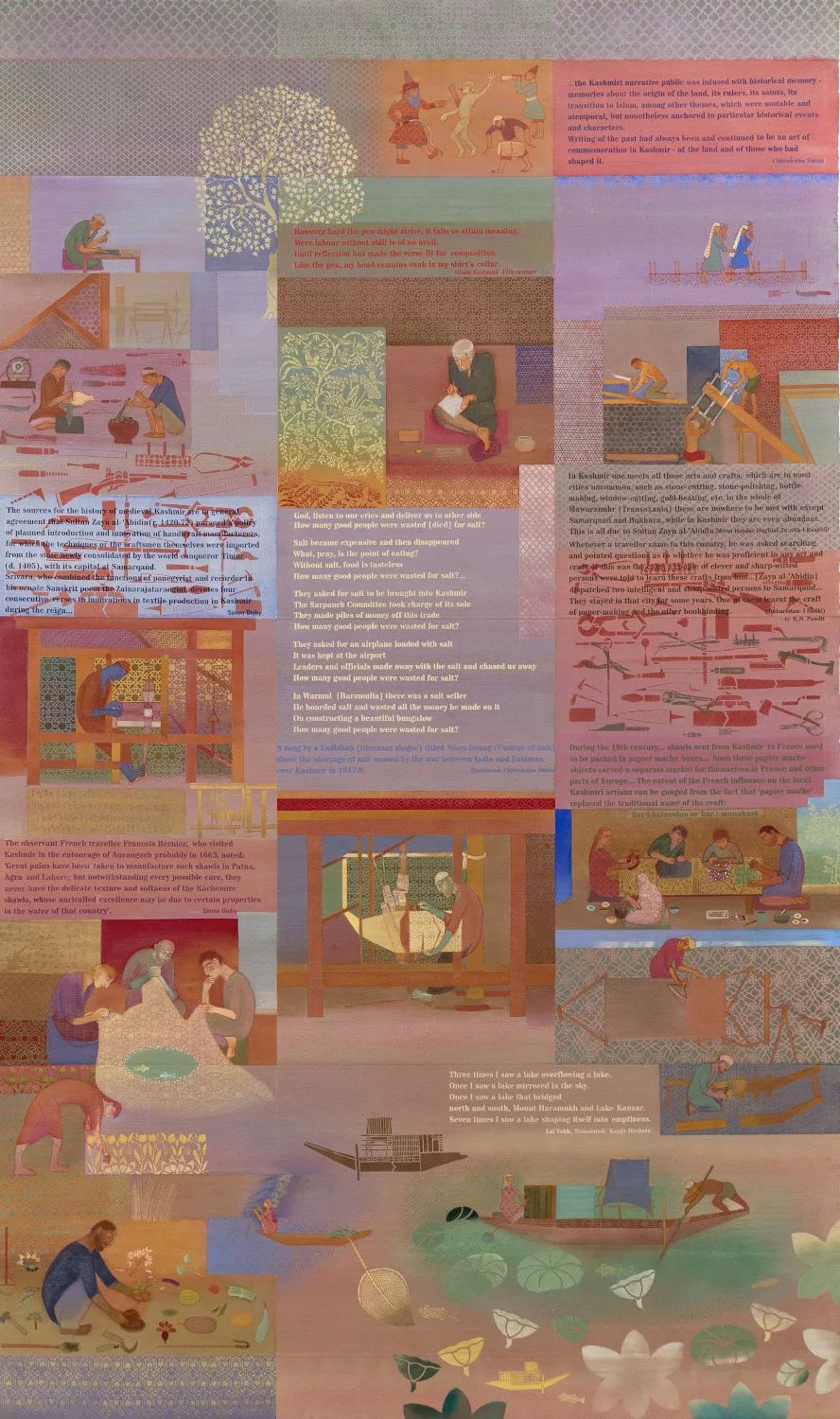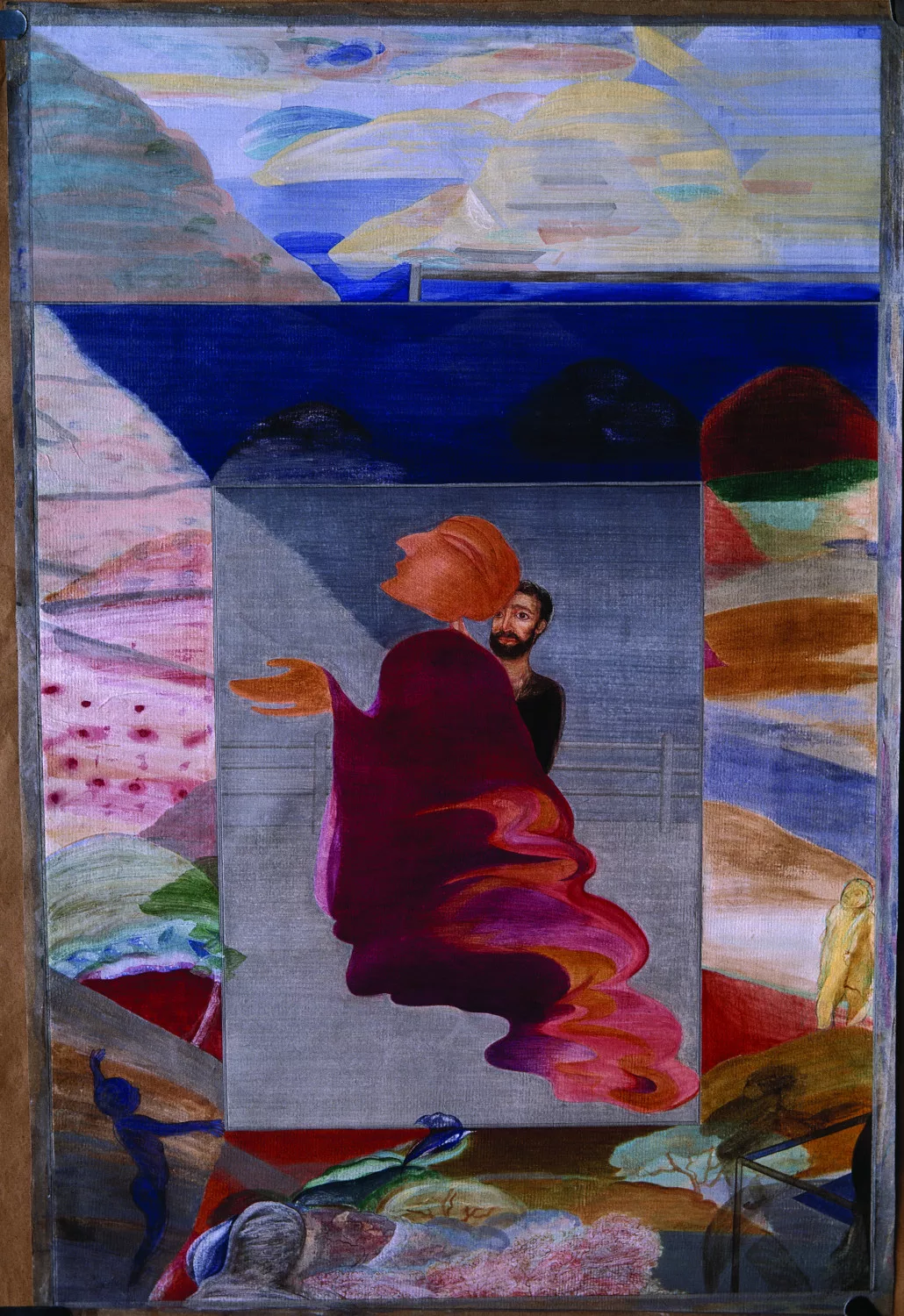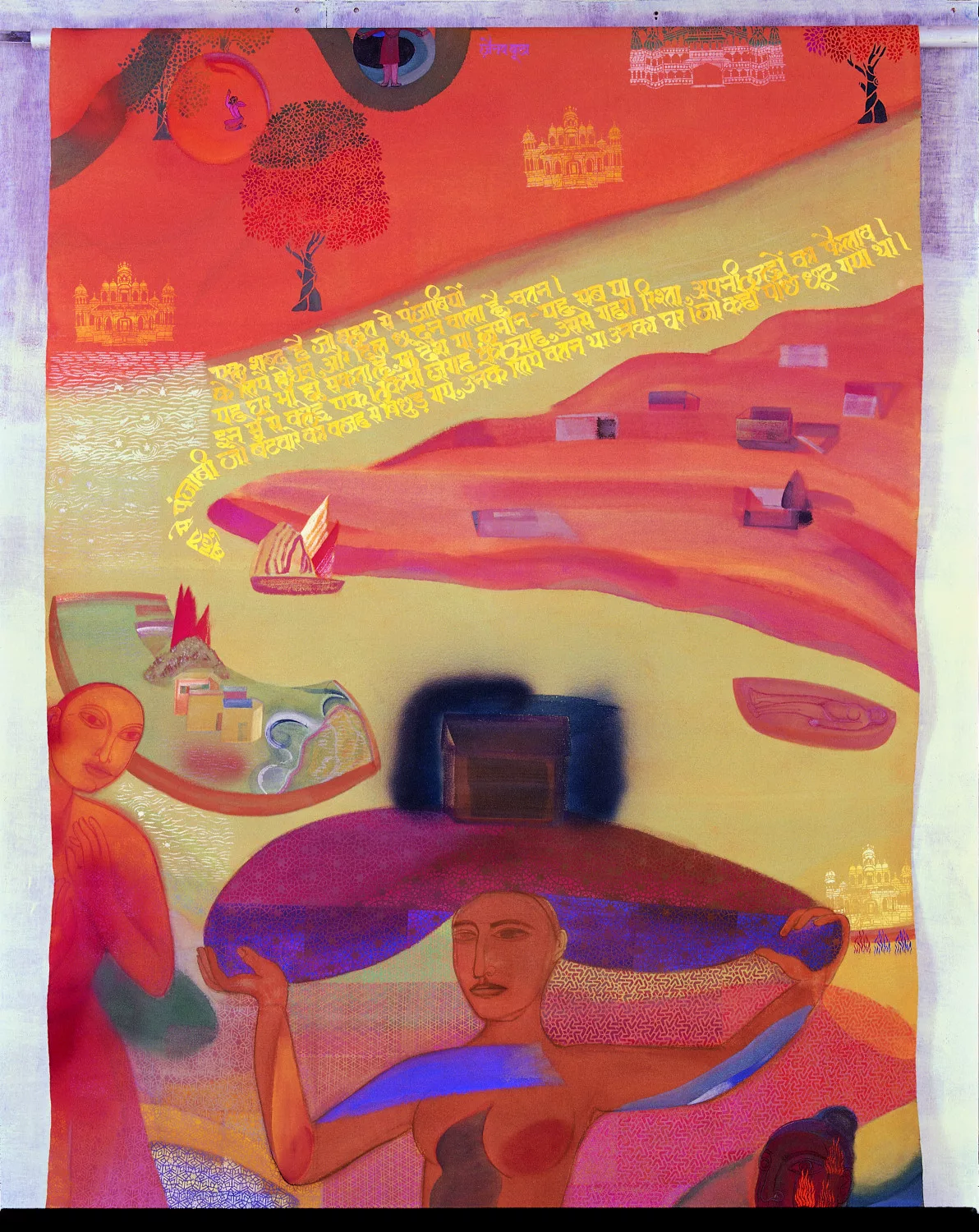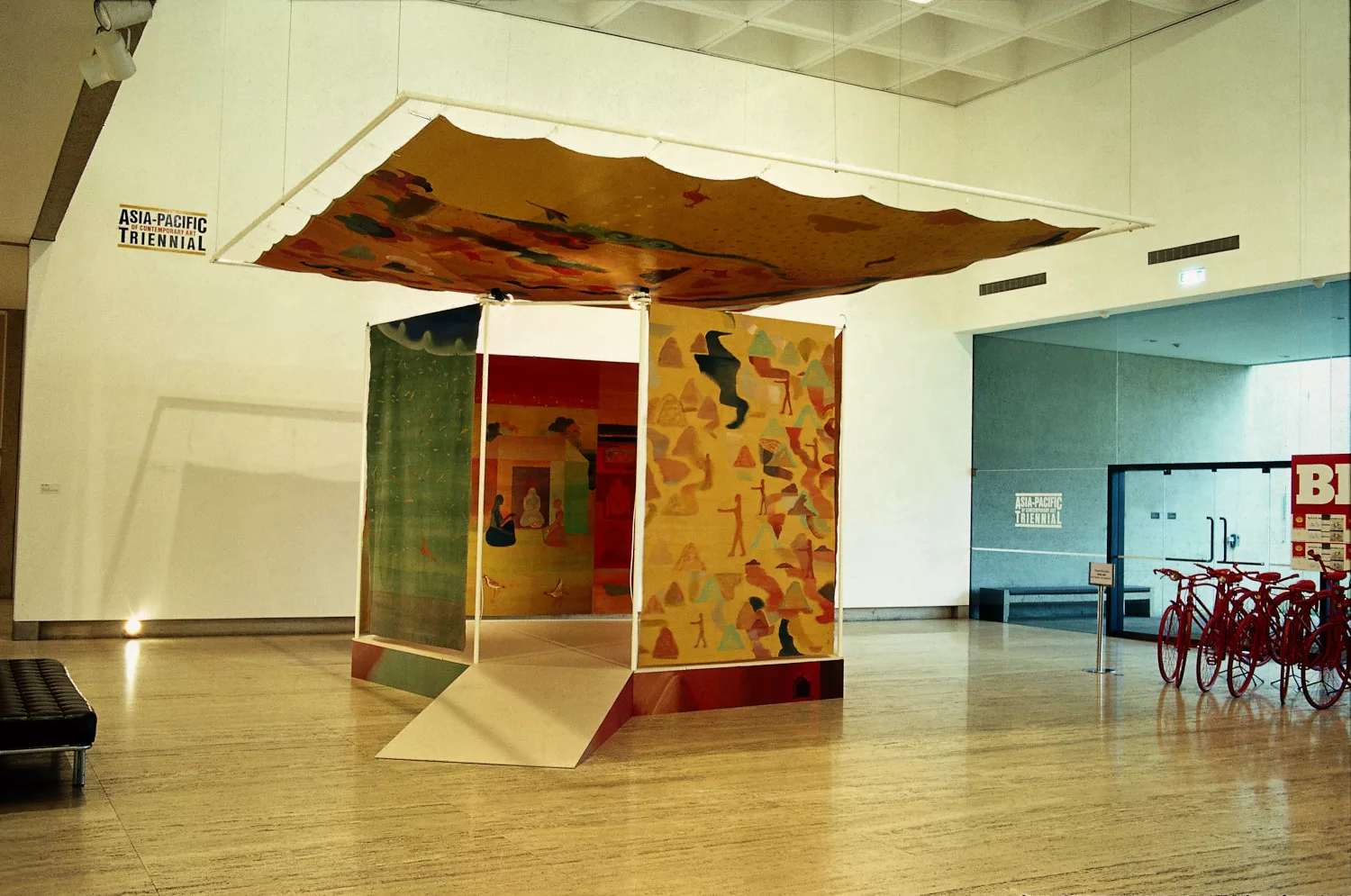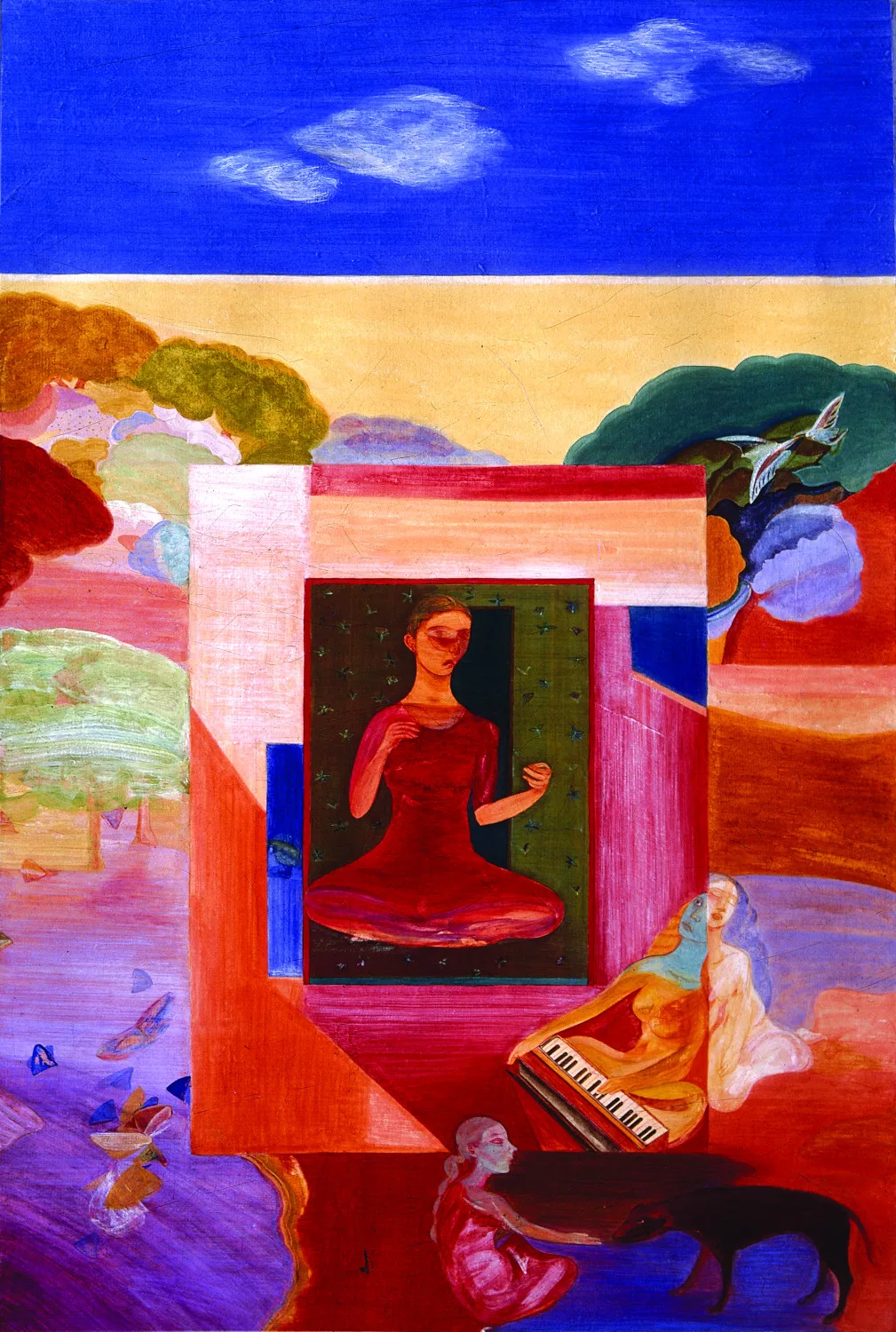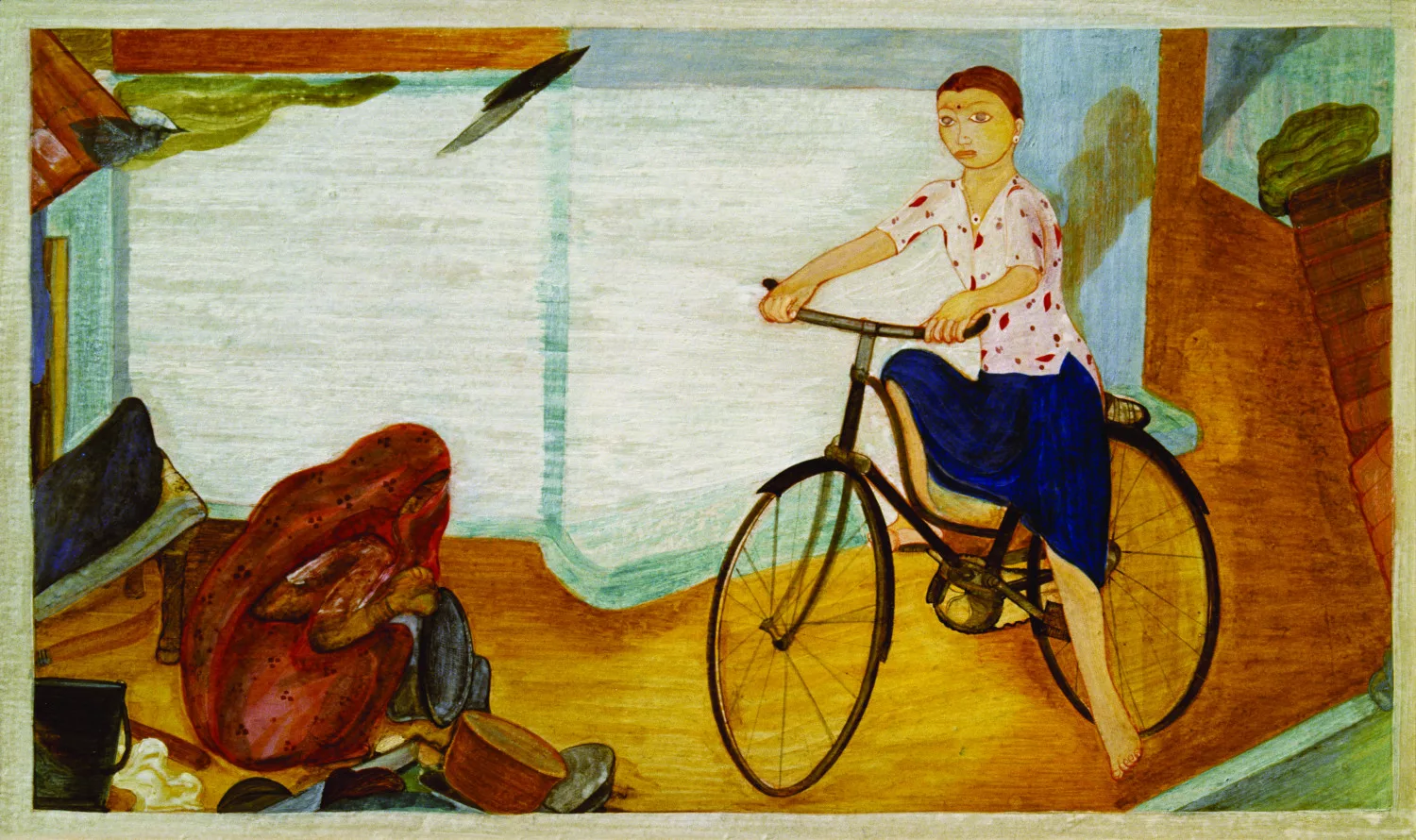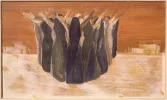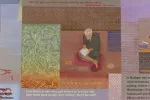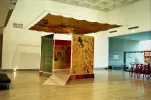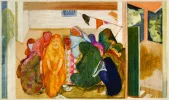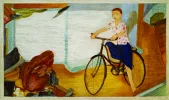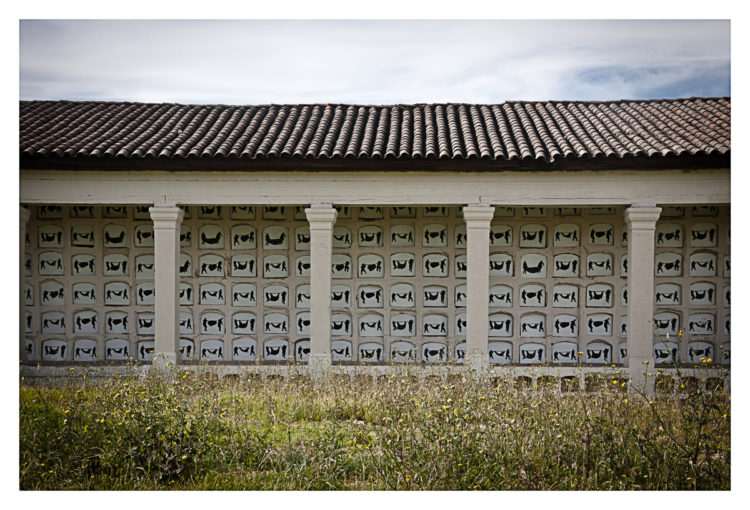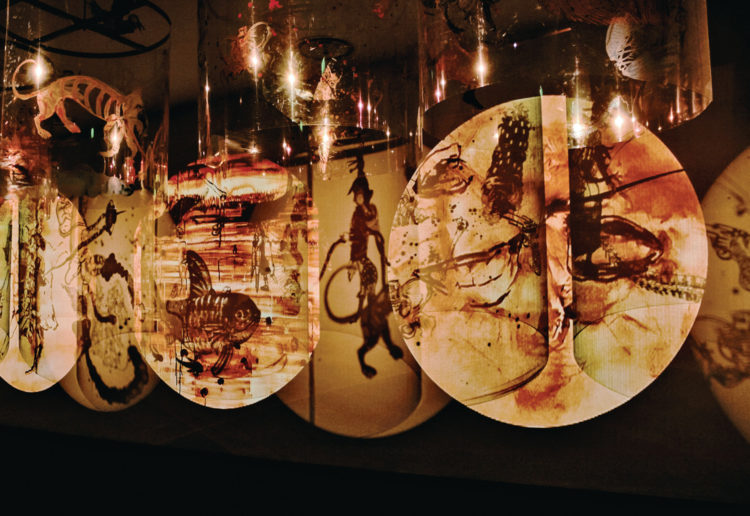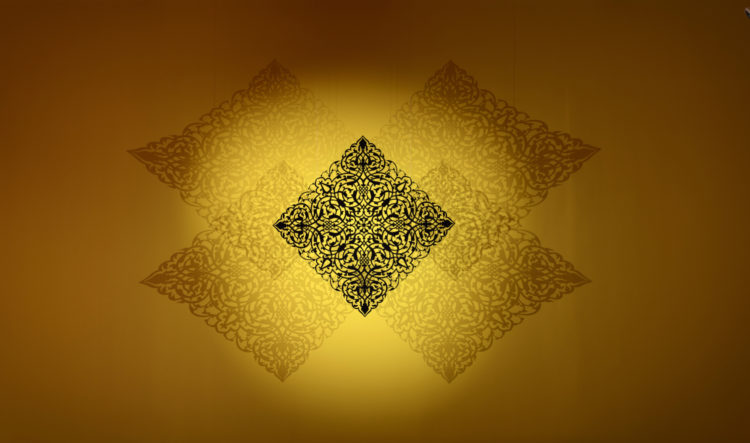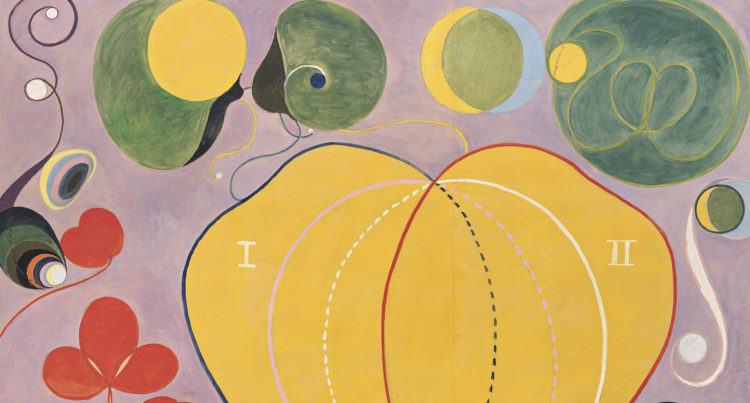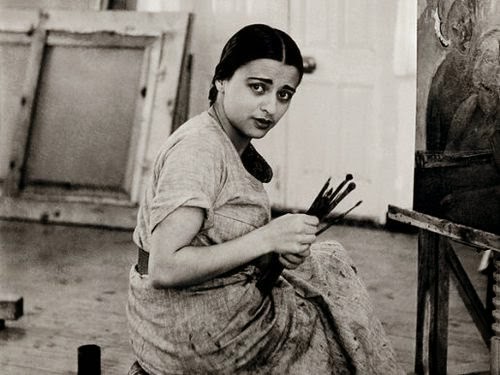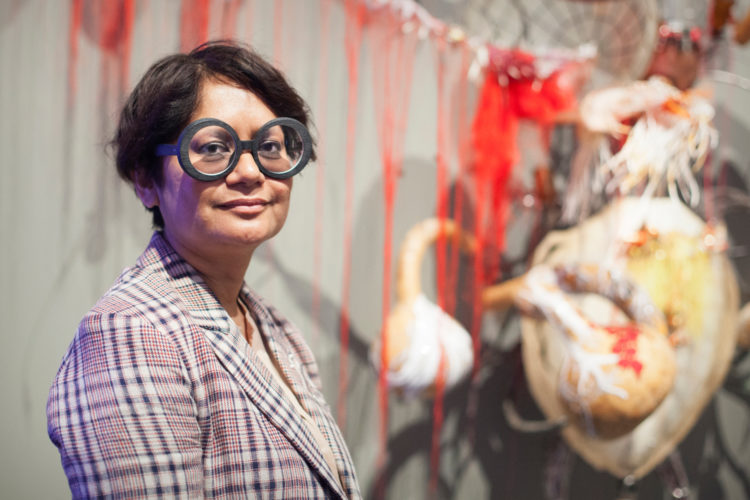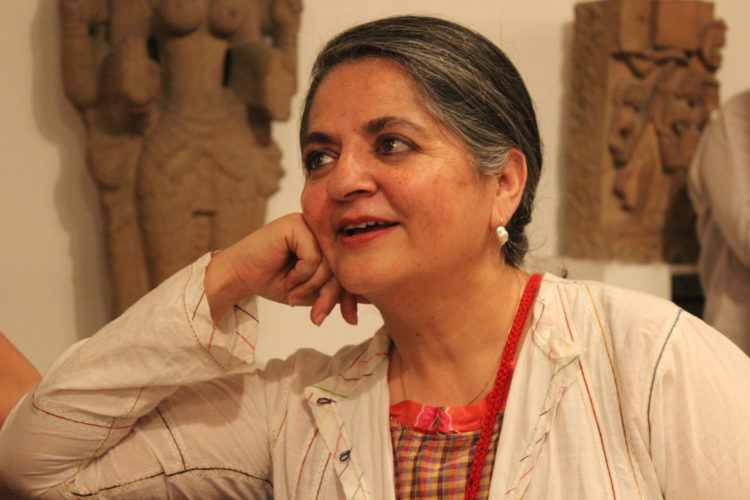Nilima Sheikh
Sangari, Kumkum, “Ruptures, Junctures, Returns,” in Kumkum Sangari (ed.), Trace Retrace: Paintings, Nilima Sheikh, New Delhi, Tulika Books, 2013
→
Bhaumik, Kaushik, “Passages in Reverie: Nilima Sheikh, Modernity and the History of Kashmir,” in Kumkum Sangari (ed.), Trace Retrace: Paintings, Nilima Sheikh, New Delhi, Tulika Books, 2013
→Achar, Deeptha, “Political Histories of Image Making: Mapping Land, Mapping Body,” in Nilima Sheikh: Drawing Trails – Works on Paper, 2008-09, exh. cat., Gallery Espace, New Delhi (17 April–30 May 2009), New Delhi, Gallery Espace, 2009
Each Night put Kashmir in your Dreams, The Art Institute of Chicago, Chicago, 8–18 March, 2014; Chemould Prescott Road, Mumbai, 29 March–29 April, 2010
→
Painted Drawings, Gallery Espace, New Delhi, 26 August–16 September, 1999
→‘When Champa Grew Up’ and Other Paintings, Triveni Gallery, New Delhi, 6–16 November, 1985
Indian painter.
Nilima Sheikh’s practice has a longstanding engagement with the poetics of violence in its entanglement with questions of nationalism, tradition, gender and cosmopolitanism. Working on paper, installations, large scrolls and screens, illustrations for children’s books and theatre set designs, her painterly and compositional styles draw on the aesthetics of manuscript, scroll and mural painting traditions from India and across Europe and Asia.
N. Sheikh studied at the Department of Painting, Faculty of Fine Arts, Maharaja Sayajirao University of Baroda, Gujarat, India, from 1965–1971, teaching there intermittently in the following decade. While she began exhibiting her artwork in group exhibitions from 1969 onwards, the 1980s was a transformative decade for N. Sheikh in several ways. Following her first solo exhibition (Triveni Gallery, New Delhi, 1983), she produced a series of artworks, When Champa Grew Up (1984–85), which is regarded as a remarkable contribution to both the field of modern art and feminist practice. The series emerged in the aftermath of the dowry-murder of a young girl who was the artist’s neighbour in Baroda. It can also be situated within the broader context of the women’s movement in India from the 1970s onwards, which saw varying intensities of engagement by creative practitioners from the fields of performance, music, visual art, literature and cinema.
Between 1982 and 1987, N. Sheikh received fellowships from the Government of India to initiate research into the traditional art practices of India, with a focus on the Pichhwai paintings of Nathdwara, Rajasthan. She brought to bear her knowledge of Pichhwai and scroll paintings when designing banners, screens and painted sets for the feminist theatre company Vivadi, founded in 1989 by theatre director and educator Anuradha Kapur. In turn, N. Sheikh’s collaborative work in the theatre stimulated her to experiment with material, scale and mise-en-scène in her paintings. This was most evident in her installation Shamiana [Canopy, 1996], exhibited at the Second Asia-Pacific Triennial of Contemporary Art, at the Queensland Art Gallery, Brisbane, Australia.
A core preoccupation of N. Sheikh’s work, particularly since the 2000s, has been the troubled region of Kashmir, one of the most militarised zones in the world. In three consecutive exhibitions, The Country Without a Post Office: Reading Agha Shahid Ali (2003), Drawing Trails (2009), and Each Night Put Kashmir in Your Dreams (2010; 2014), and the public installation Conjoining Lands for Mumbai Airport in 2013, created in collaboration with B.V. Suresh and several artisans and craftspeople from Kashmir, N. Sheikh has engaged with the conflict-ridden terrain of Kashmir, evoking its rich, pluralistic, and cosmopolitan traditions against the backdrop of the banality of everyday violence.
N. Sheikh’s works have been shown as part of several large-scale international art exhibitions: the Sharjah Biennial 15 (Sharjah, 2023), Kochi-Muziris Biennale (Kochi, 2018), documenta 14 (Athens and Kassel, 2017), and An Atlas of Mirrors, 5th Singapore Biennale (Singapore, 2016). Her work is held in public collections at The Art Institute of Chicago (United States); The Queensland Art Gallery, Brisbane (Australia); and The Leicester Museum and Art Gallery (United Kingdom).



